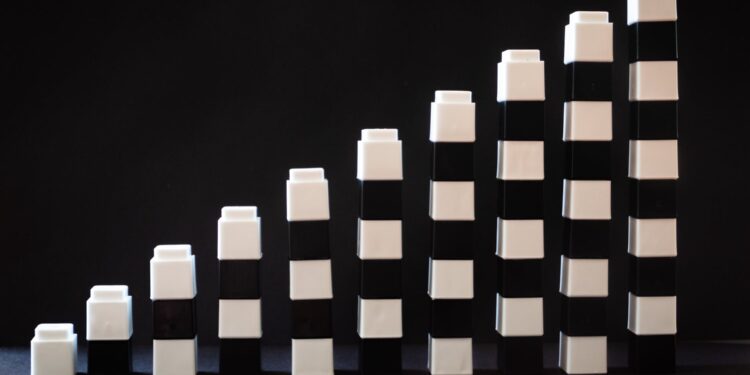Business processes are not always simple. But there’s a reliable tool that simplifies the journey – block diagrams. These visual aids are immensely useful in laying out the intricate pathways of workflows and systems, making comprehension and collaboration easier than ever before.
The Power of Visualization
Humans are naturally visual creatures. Studies indicate that we process images 60,000 times faster than text. By leveraging this inherent strength, block diagrams can transform complicated textual data into easily digestible visual chunks. But what exactly are these diagrams, and how do they function?
What are Block Diagrams?
Block diagrams are simple, standardized visual representations of a process or system. Using various shapes and connecting lines, they depict the flow and relationship between different components or steps. Whether you’re illustrating a business procedure, an IT infrastructure, or a manufacturing process, block diagrams can be tailored to fit any scenario.
Benefits of Using Block Diagrams for Process Flow
- Clear visualization: With block diagrams, abstract concepts and intricate processes become tangible. By breaking down each step and visualizing its place within the whole, you offer clarity. This birds-eye view eliminates ambiguity, ensuring everyone’s on the same page.
- Enhanced collaboration: When team members from diverse departments collaborate, it’s crucial to have a shared understanding. A block diagram provides a universal language, encouraging better communication and teamwork.
- Efficient problem-solving: Identifying bottlenecks or inefficiencies becomes straightforward when you can see the entire process. With every step laid bare in a block diagram, stakeholders can pinpoint areas of improvement and devise strategies accordingly.
- Flexibility and adaptability: Processes change. And as they evolve, your block diagram can be easily adjusted to reflect these changes. This adaptability ensures your diagrams remain relevant and functional through time.
Creating Effective Block Diagrams
Designing a block diagram might seem simple, but there’s an art to crafting one that’s both functional and user-friendly. Here are some pointers:
- Stay consistent: Consistency is key. Use standardized symbols and maintain uniformity in shapes, colors, and lines throughout the diagram. This promotes understanding and reduces potential confusion.
- Prioritize simplicity: A cluttered diagram defeats its purpose. Focus on portraying essential information. Eliminate unnecessary elements and ensure there’s ample space between components for clarity.
- Engage stakeholders: When creating a block diagram for a particular process, involve the stakeholders of that process. Their insights can prove invaluable in ensuring accuracy and relevance.
- Test and refine: Once your diagram is ready, share it with a test group. Gather feedback, identify potential areas of confusion, and refine accordingly.
Tools for Creating Block Diagrams
In the digital age, manual creation of block diagrams on paper has largely become a thing of the past. Today, several tools can help you craft precise and visually appealing diagrams effortlessly.
- Software solutions: Various software options, both free and paid, cater to diagramming needs. These programs offer a plethora of shapes, connectors, and templates, streamlining the design process.
- Collaborative platforms: Collaboration is integral in modern businesses. Many platforms integrate block diagramming features with collaborative capabilities. These platforms allow real-time editing and feedback, ensuring diagrams are a collective effort and harnessing the group’s wisdom.
The Role of Block Diagrams in Training
Effective training is a cornerstone for any successful organization. Block diagrams can play an instrumental role in this domain.
Making abstract concepts tangible: Training often involves introducing new recruits or team members to unfamiliar concepts or processes. A well-crafted block diagram can serve as a roadmap, guiding learners through unfamiliar terrain and making abstract ideas more relatable.
Reinforcing knowledge: Visual aids can reinforce learning. As trainees revisit block diagrams, they can solidify their understanding, ensuring key processes or concepts are firmly ingrained.
Block Diagrams Beyond Business
While we’ve emphasized the role of block diagrams in the corporate sphere, their utility spans far wider.
- Academic excellence: Educators often employ block diagrams to explain complex theories or sequences. Whether it’s a historical event timeline or the stages of cell division, diagrams provide students with a clear, visual learning aid.
- Personal project management: Individuals can use block diagrams for personal endeavors, from planning a home renovation to mapping out a novel’s plotline. The clarity these diagrams offer can be as beneficial in personal projects as it is in business.
In our fast-paced world, time is of the essence. Block diagrams, with their straightforward visuals, act as invaluable tools in speeding up comprehension and encouraging efficient communication. Whether you’re a novice or a seasoned professional, integrating block diagrams into your toolkit can pave the way for smoother workflows, clearer understanding, and enhanced collaboration.





